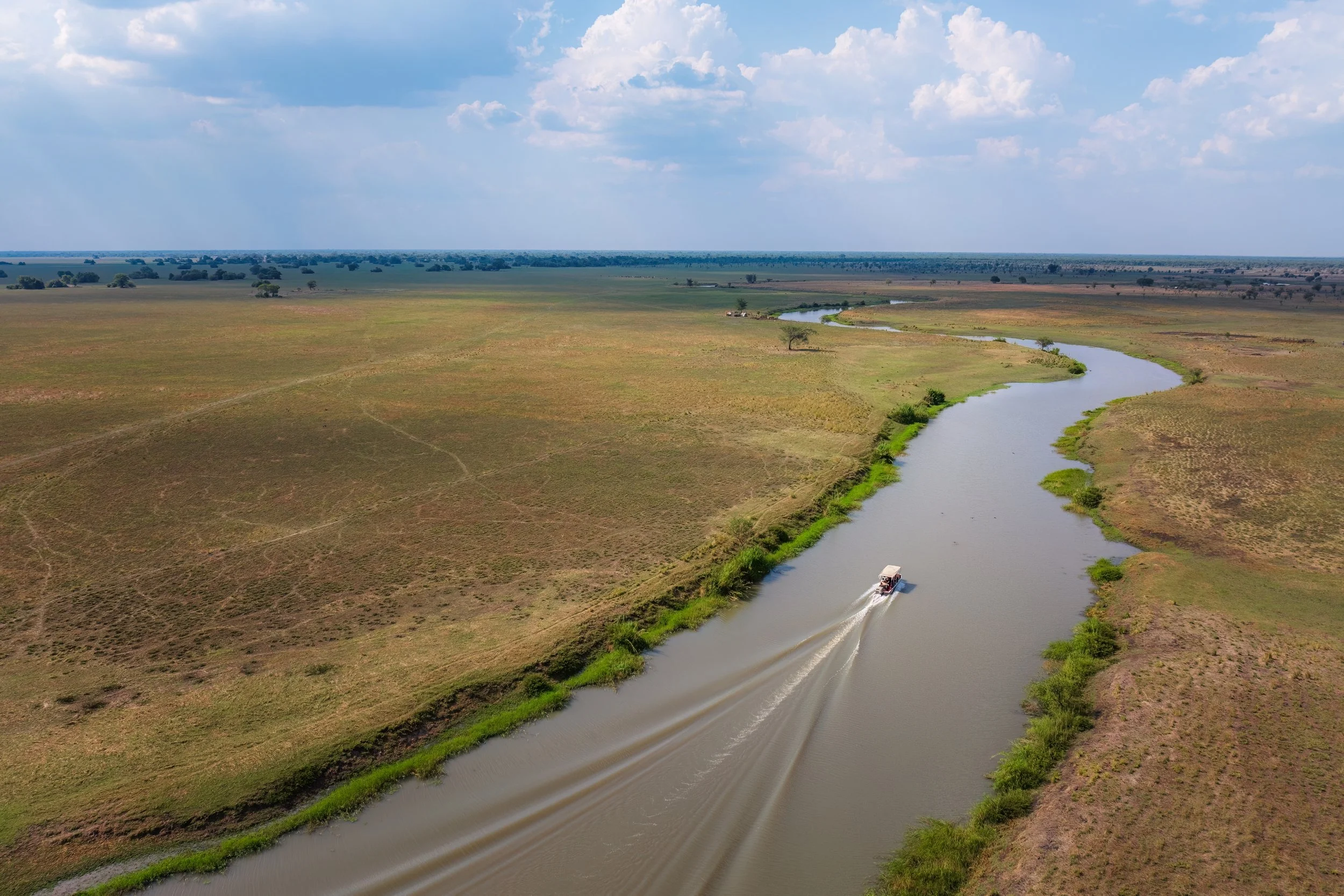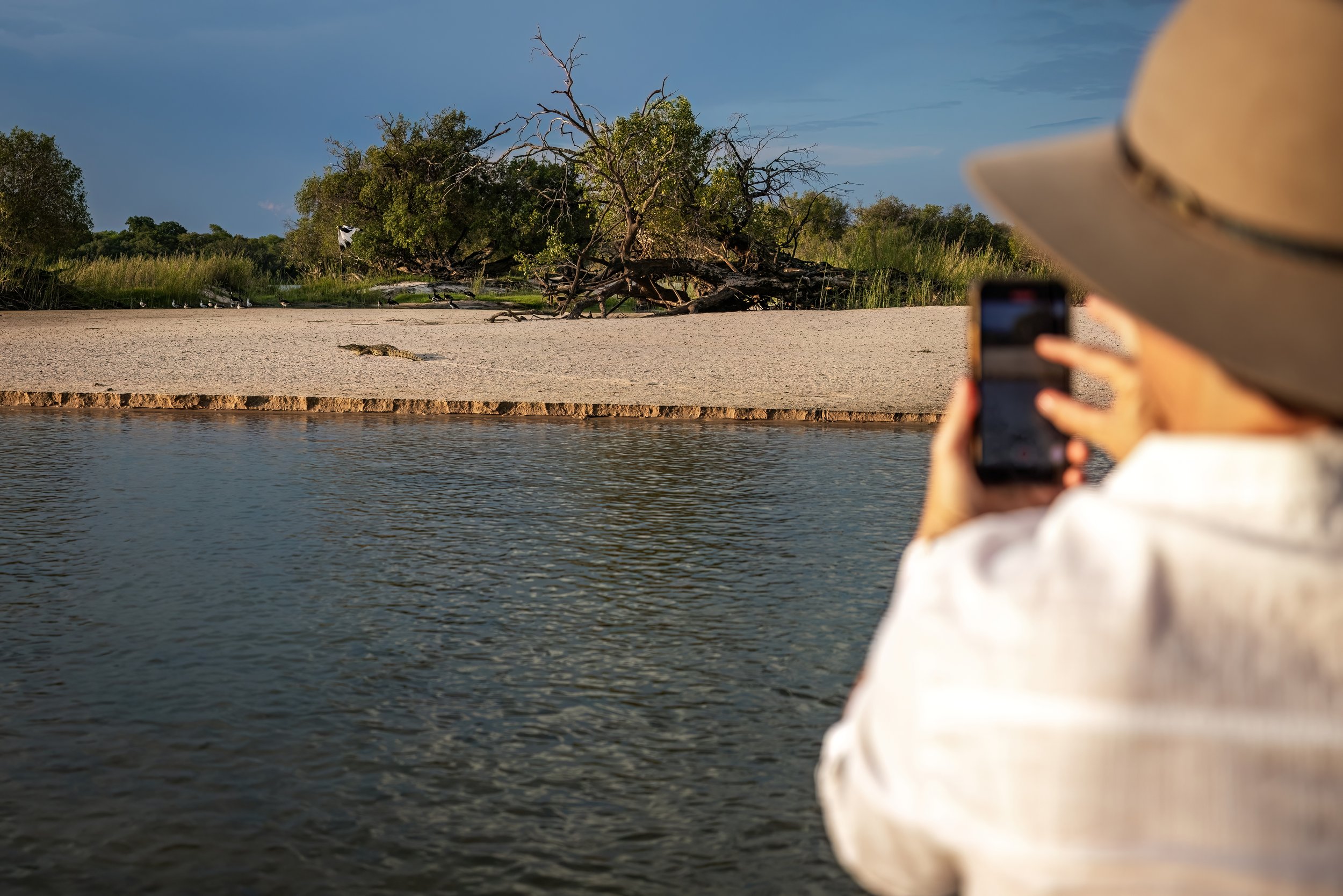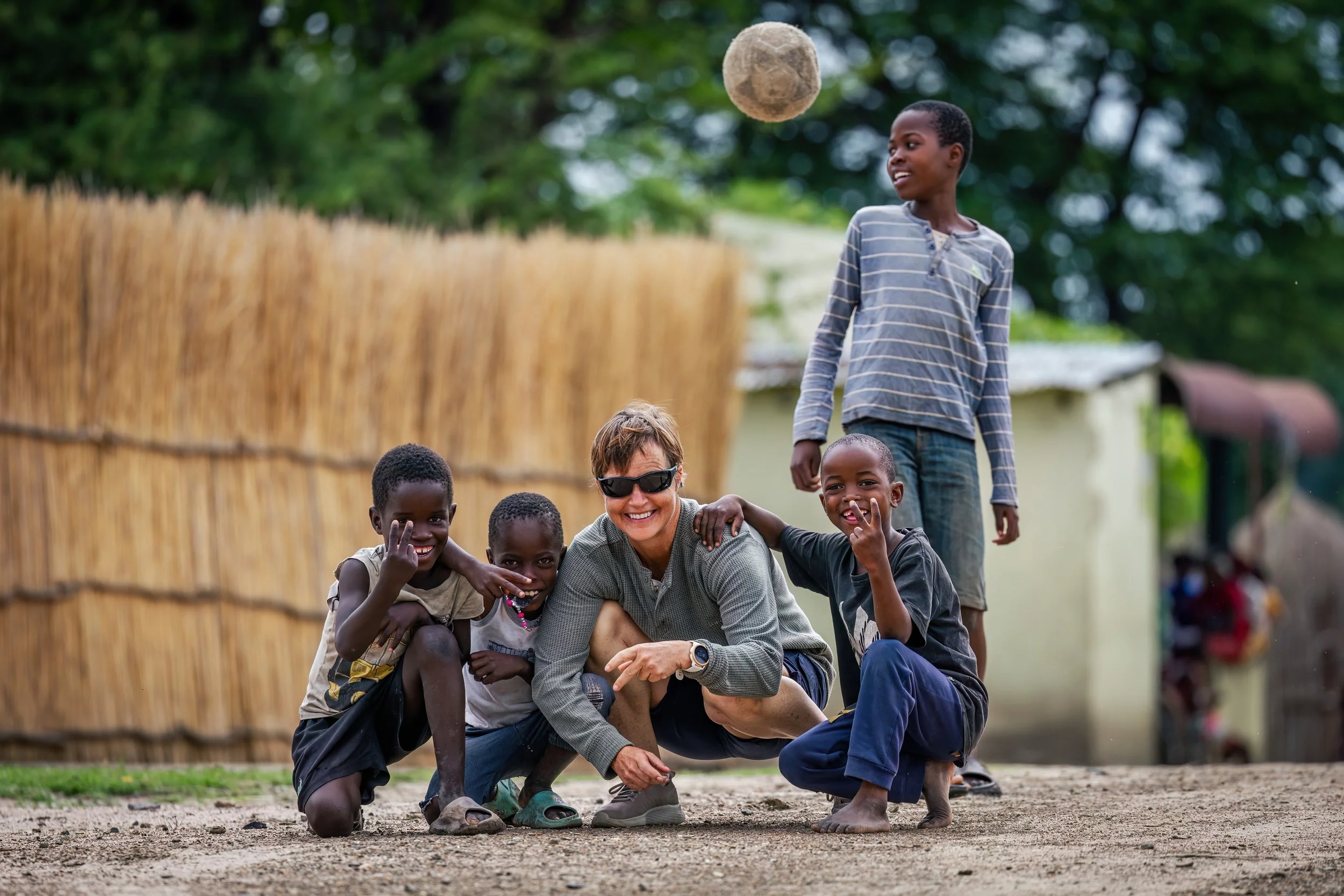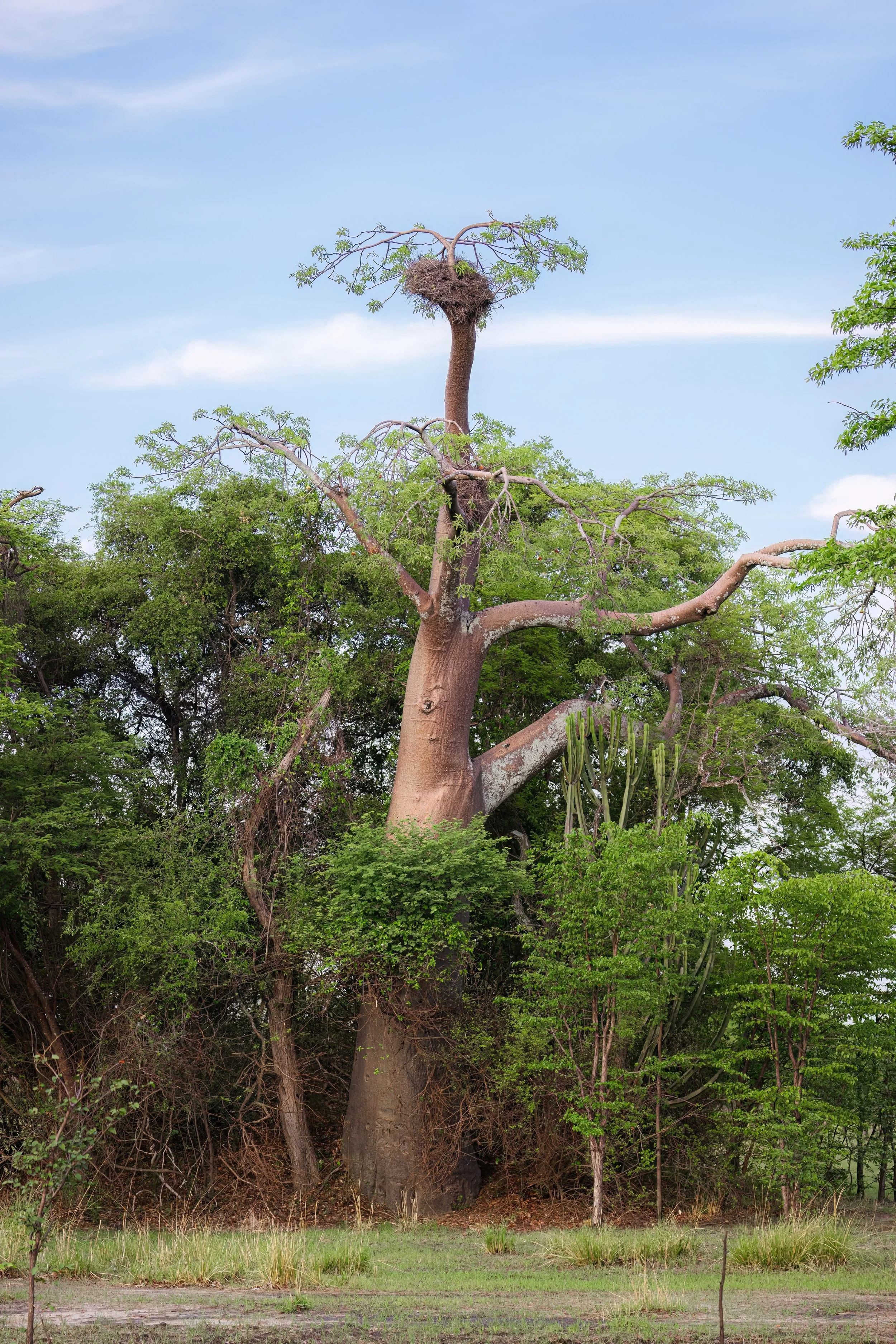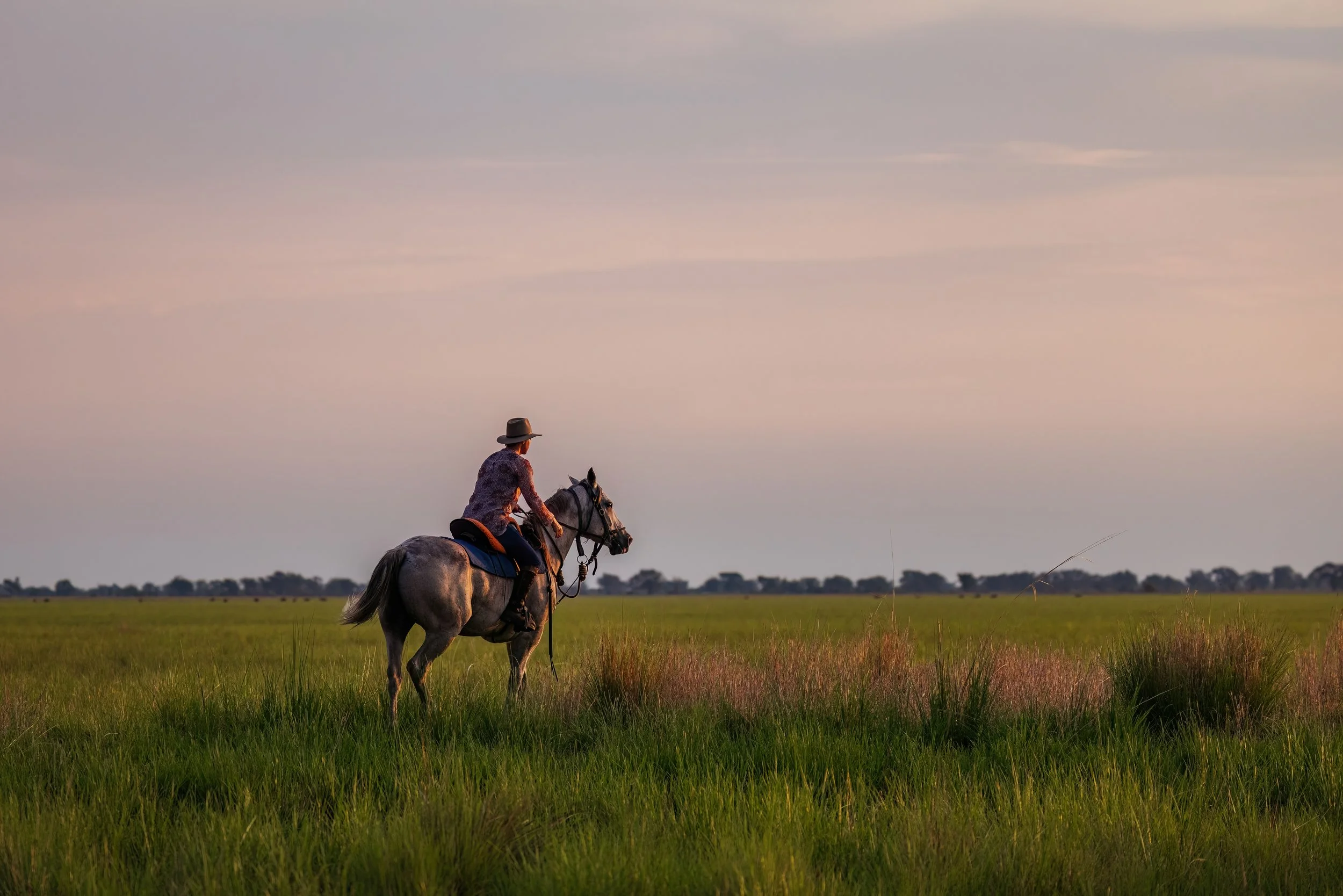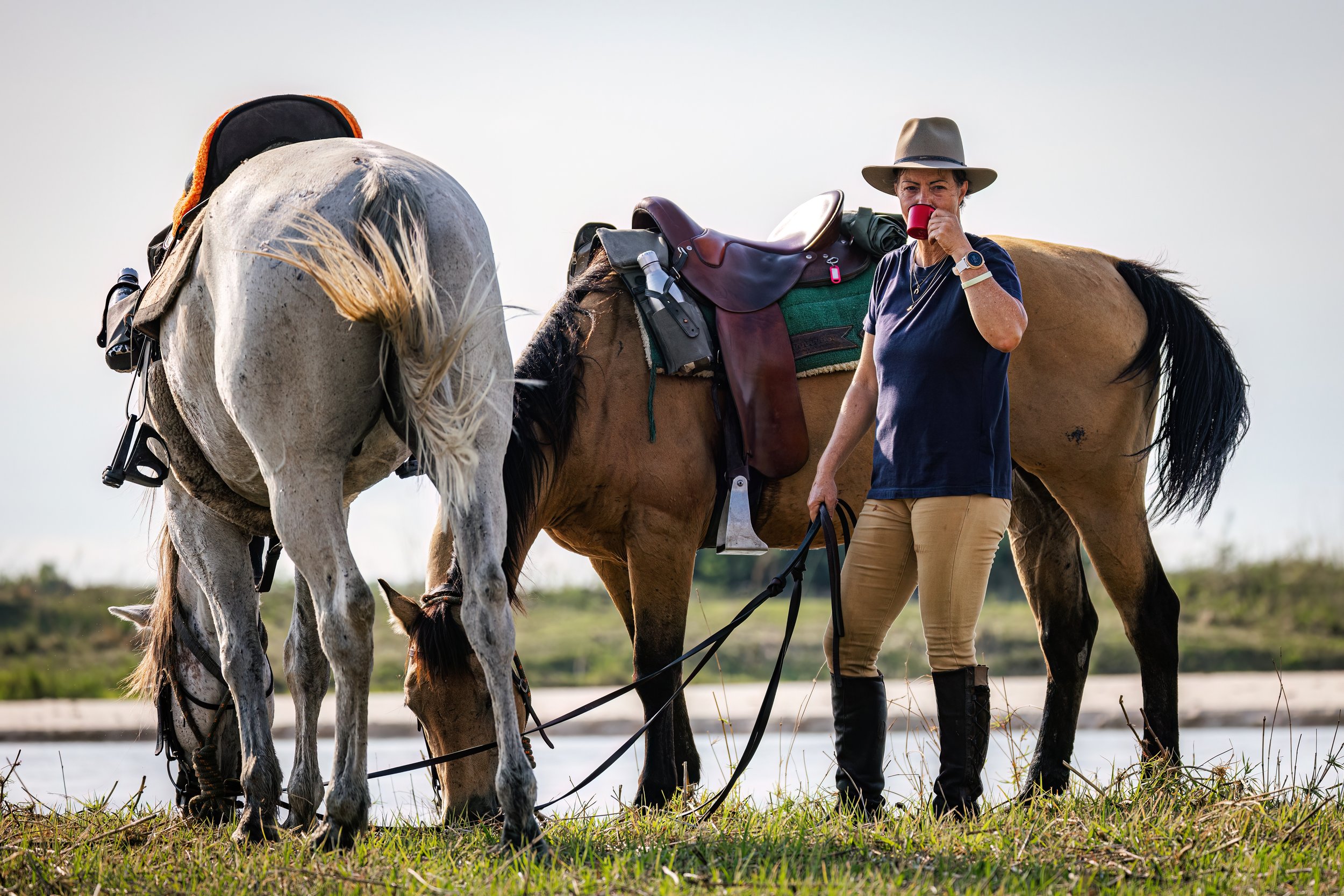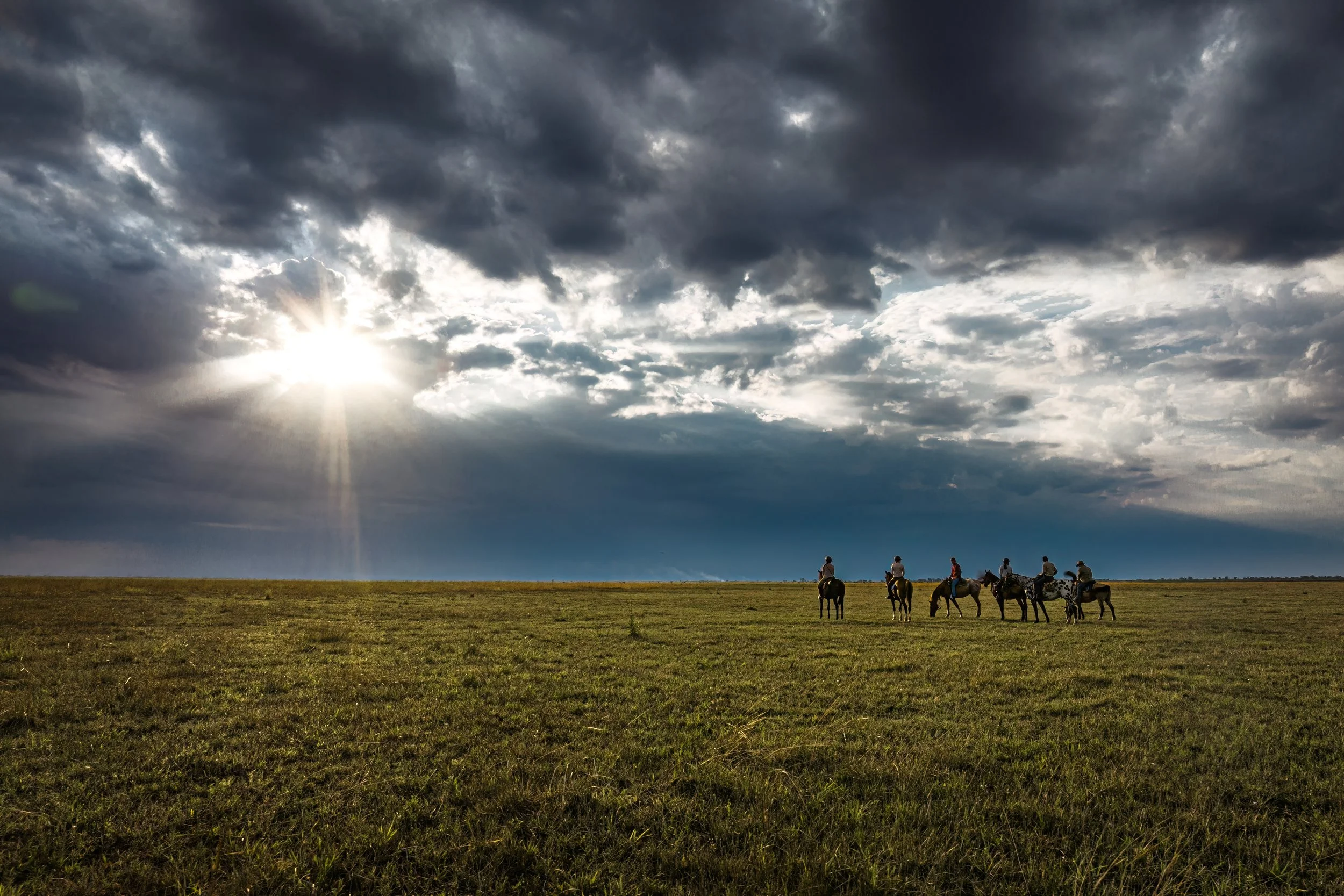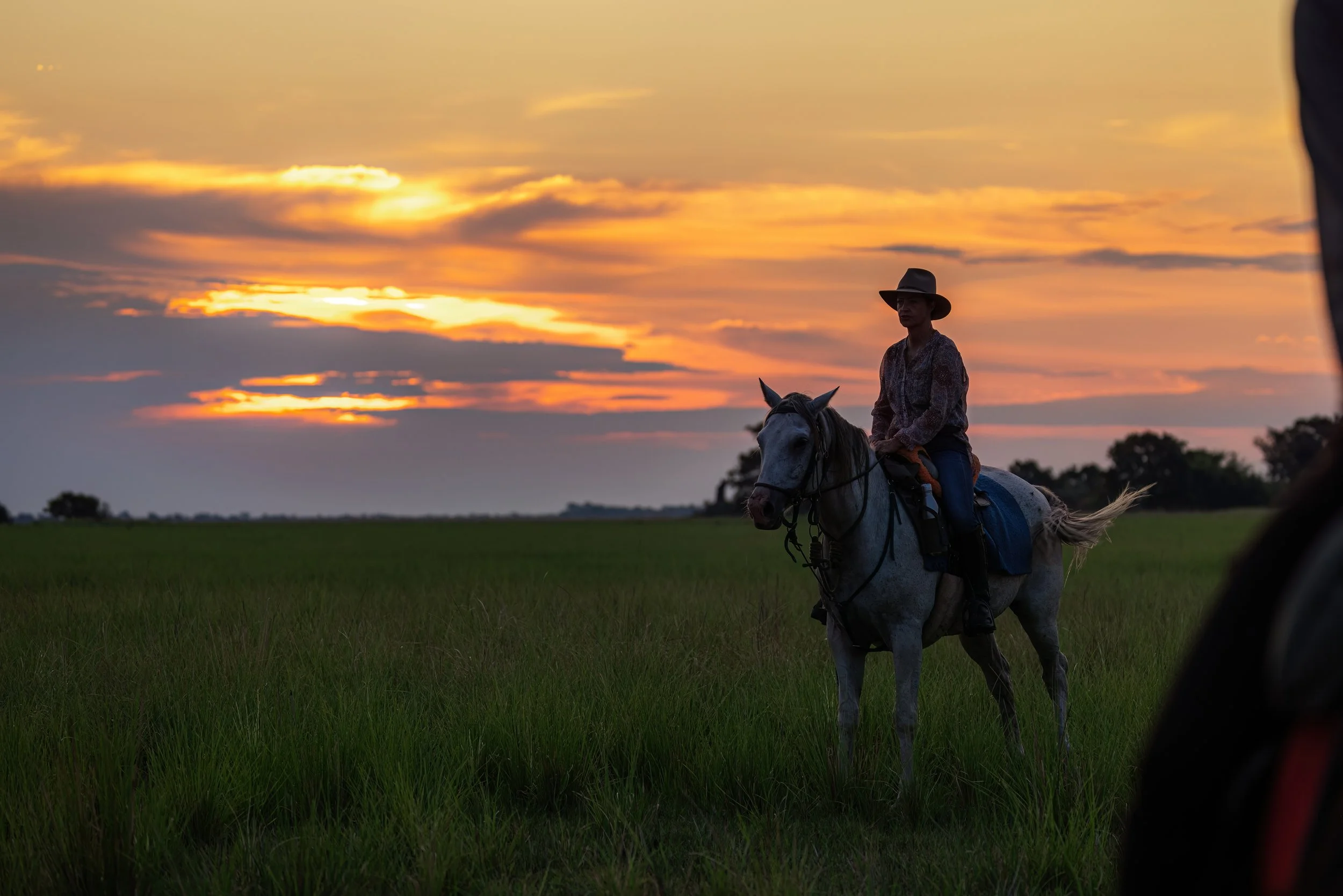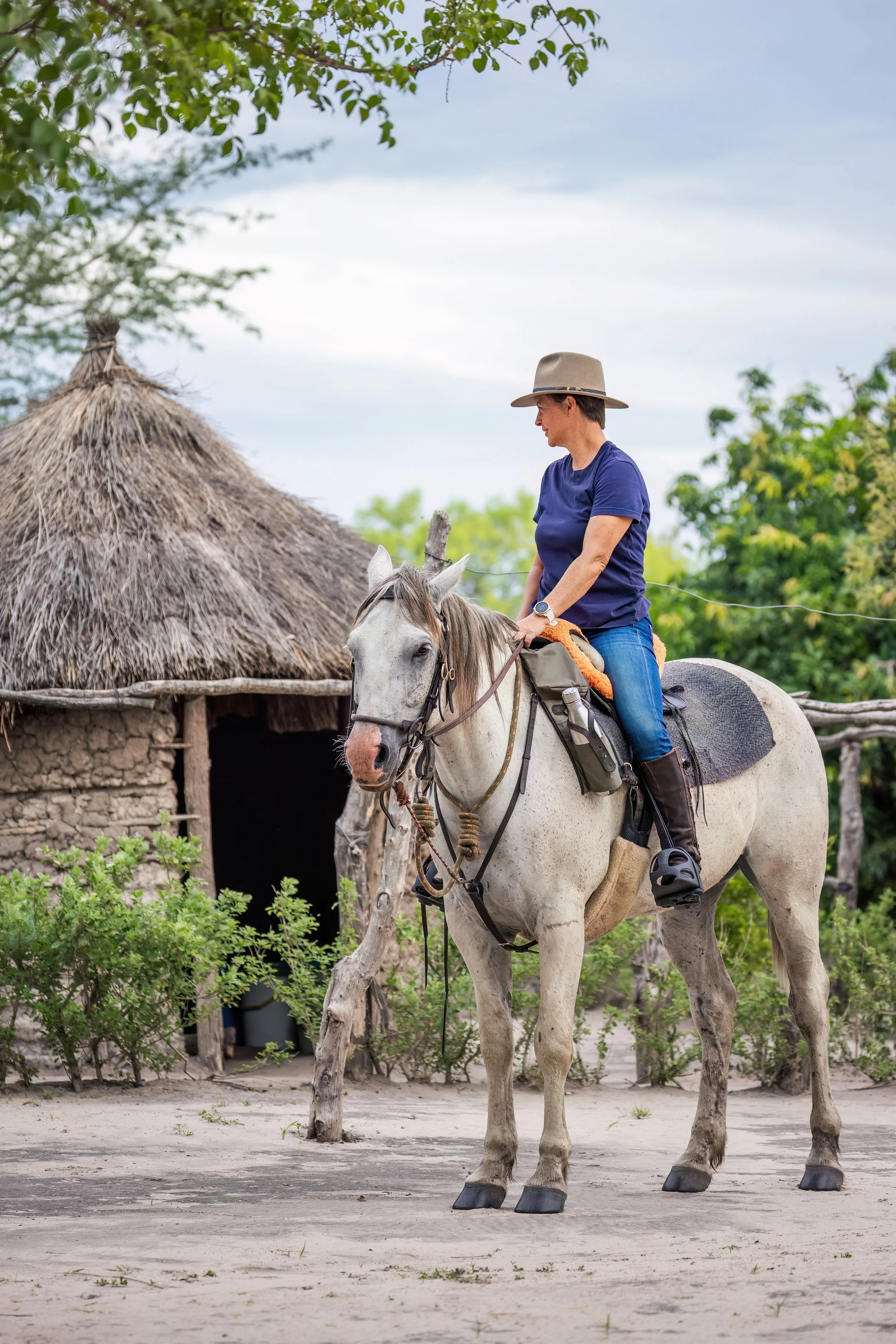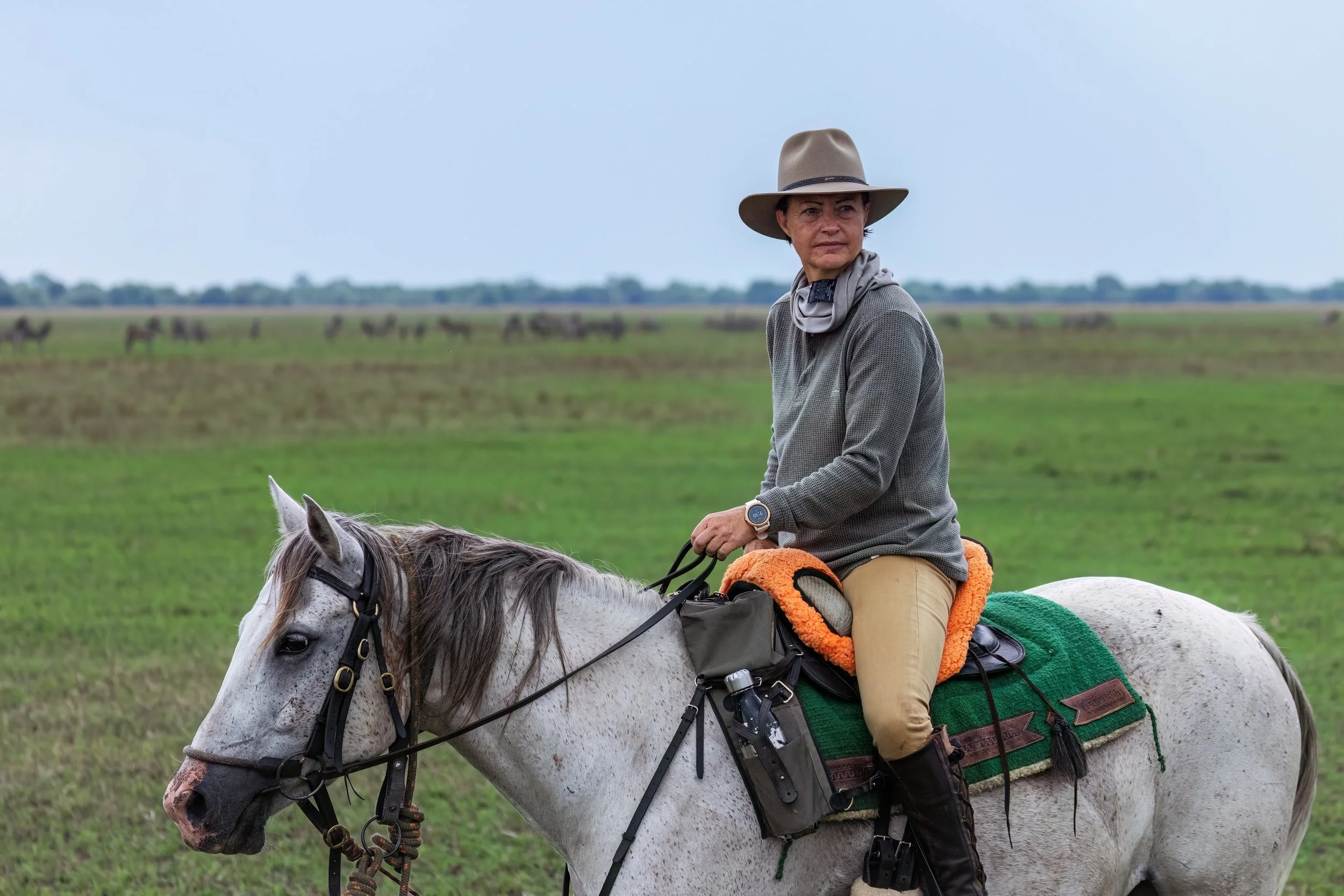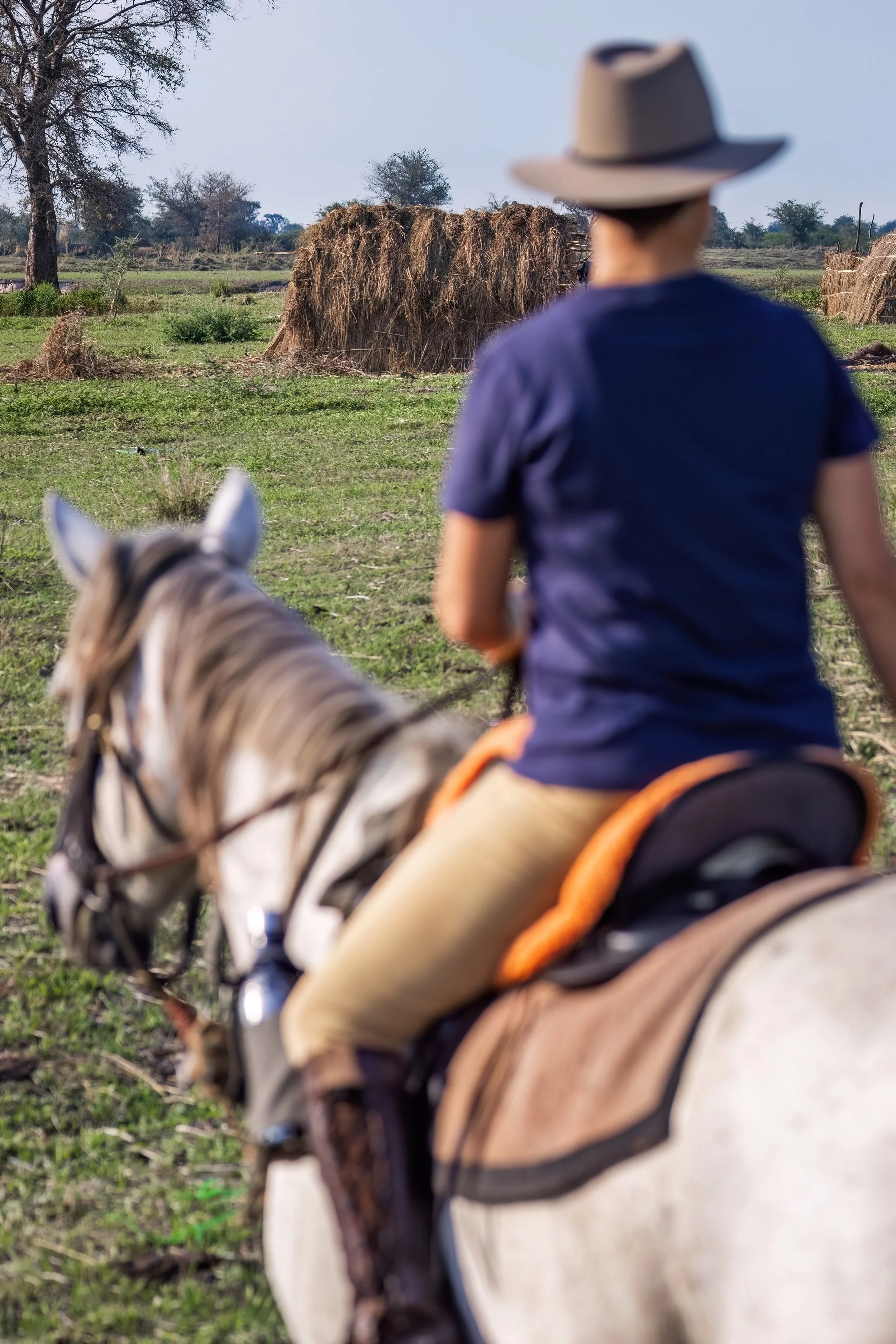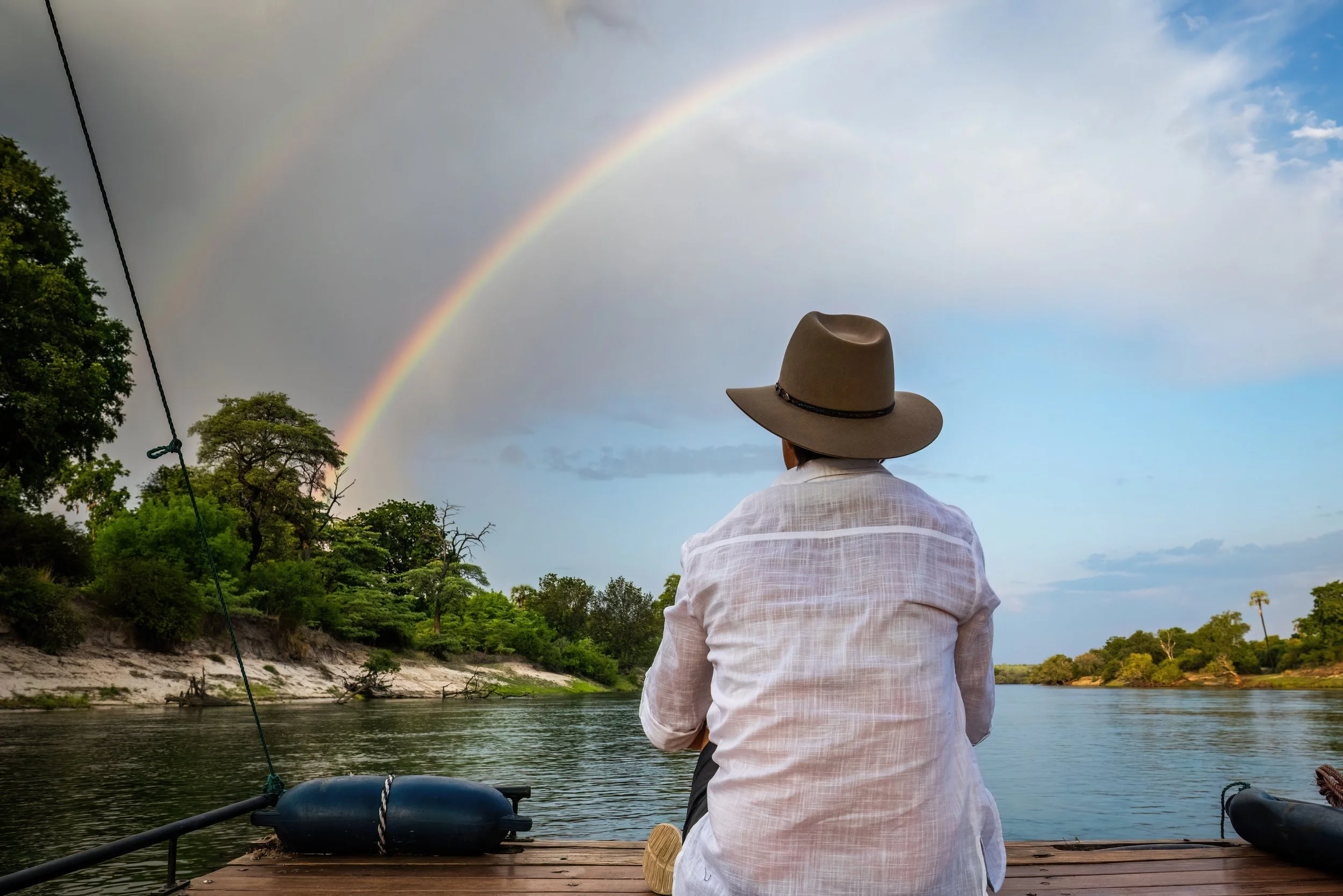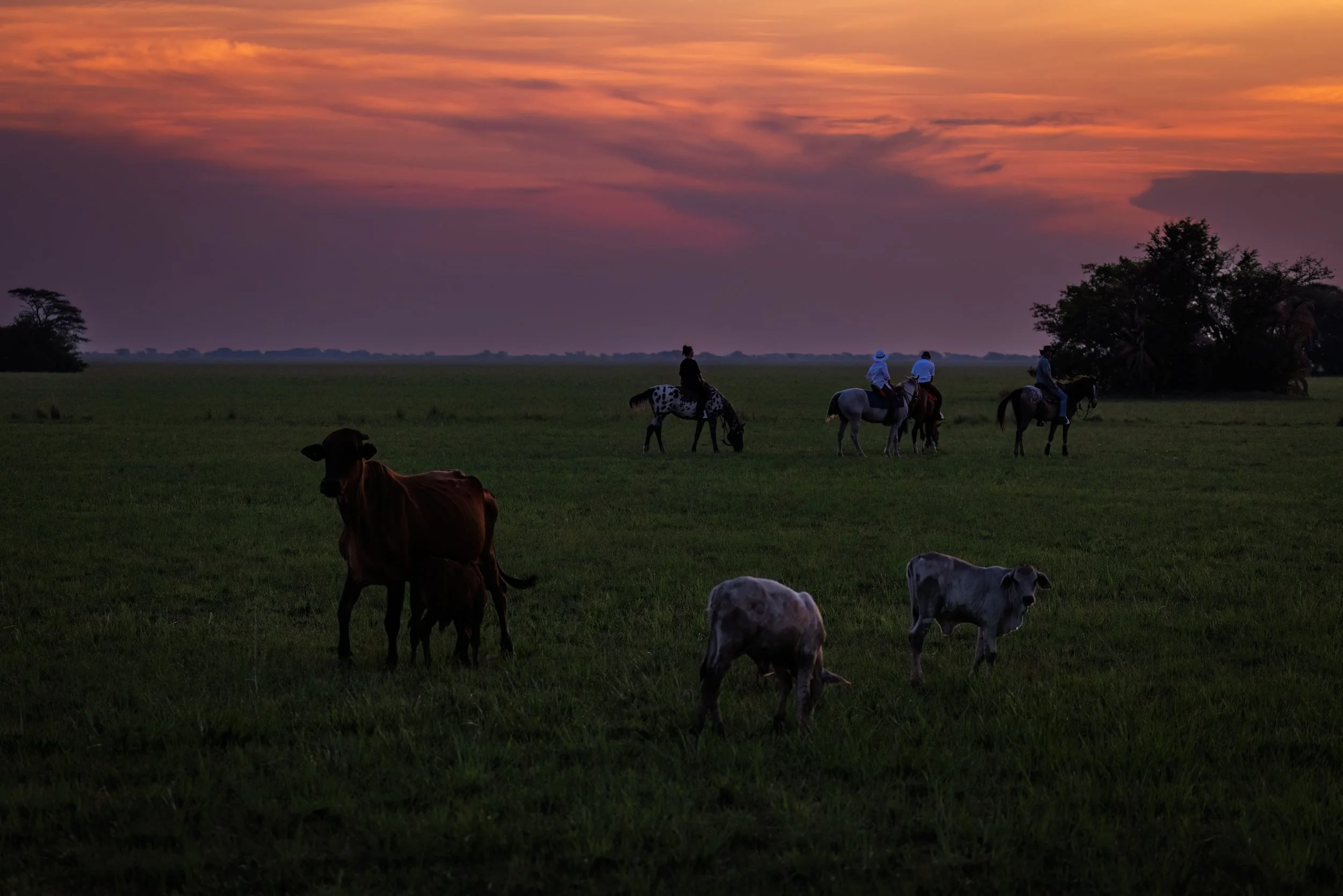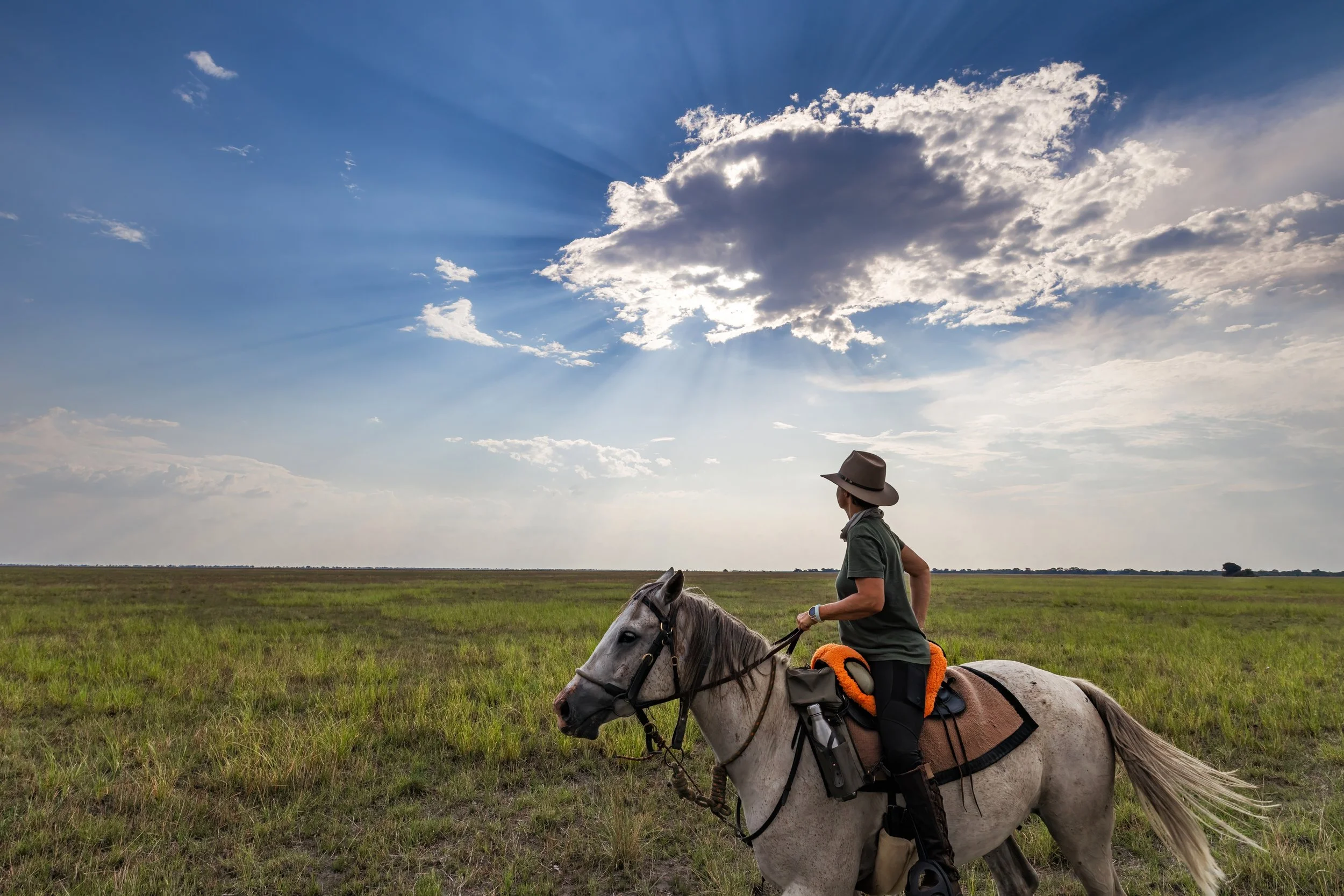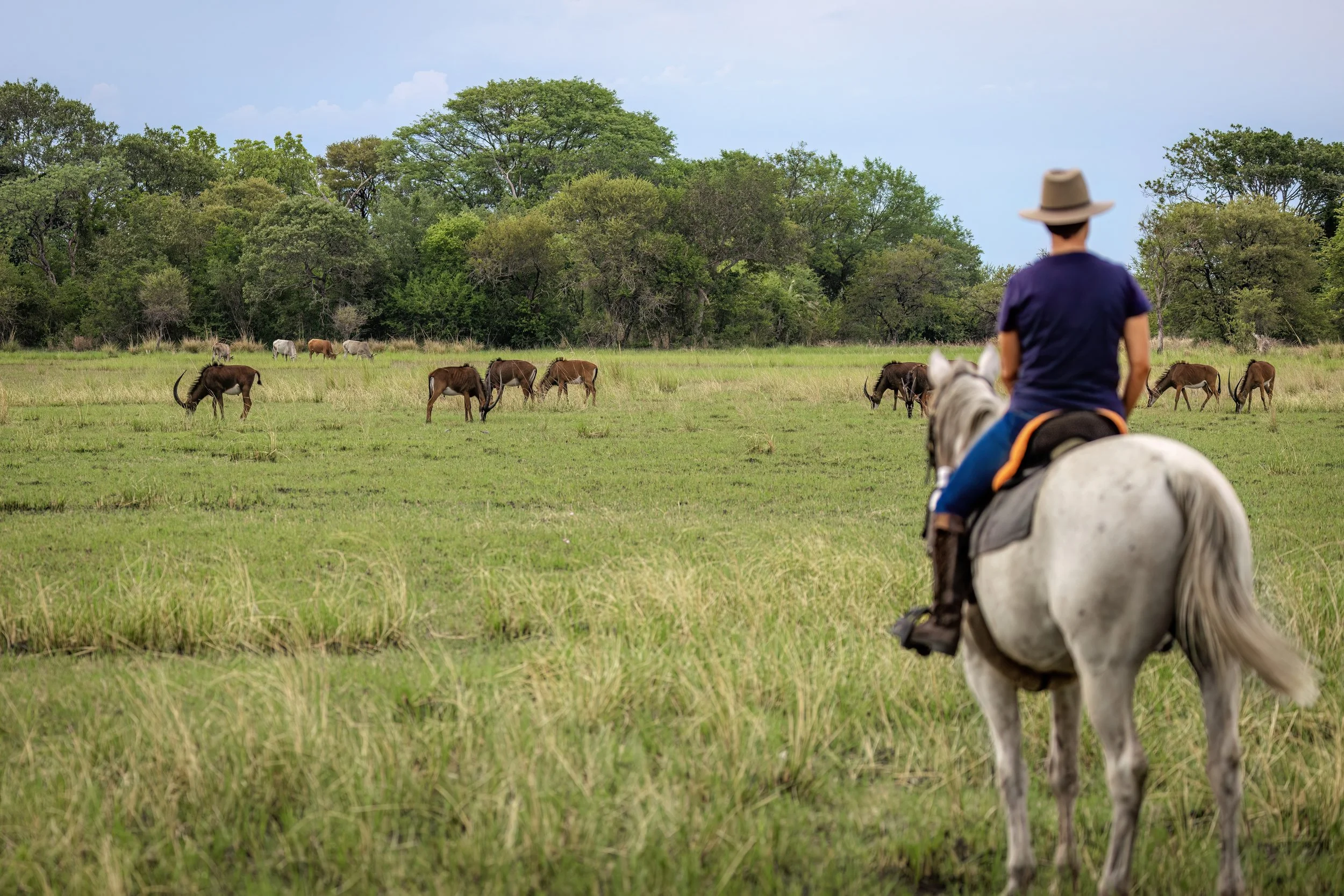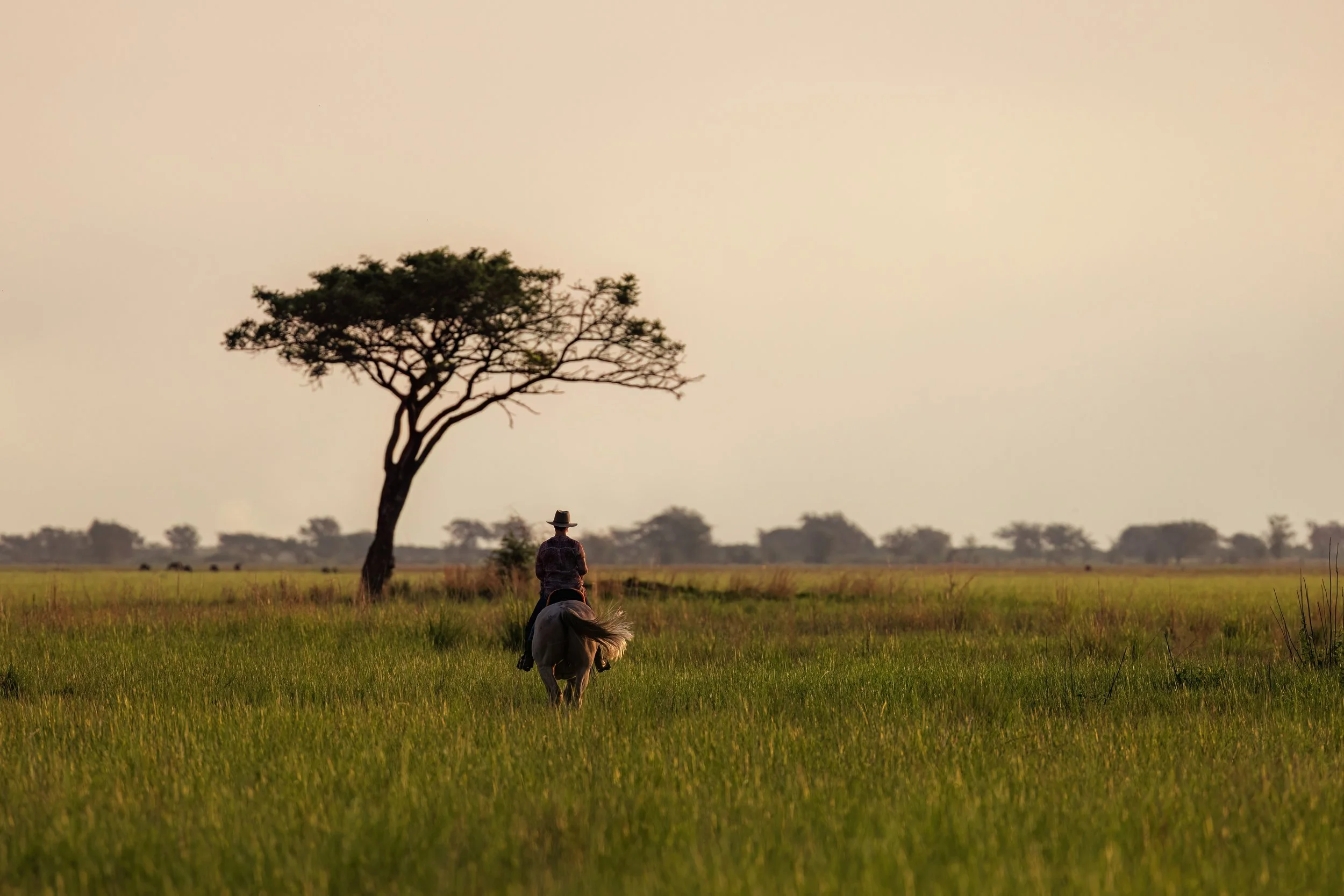
We were delighted to have hosted Mariaan Liversage - trainer, endurance rider and co-owner of Liversage Saddles at Zambian Horseback Safaris. Liversage Saddles manufacture Trailrider Saddles consisting of a range of Trailriding saddles, farm working saddles and specialized, custom endurance saddles distributed in South Africa, Australia, New Zealand and USA.
My journey with Zambian Horseback Safaris
SIMALAHA - A PLACE WHERE AFRICA RE-UNITED WHAT BELONGED TO HER
One phone call, 2 seconds… no progress without a decision, they say! The next moment we are embarking on a journey, leaving behind world politics, globalization, and human-caused disasters.. almost transcending! The start of what would reset our values. Remembering what is important and most of all discovering an ecological wonder. A place once war-ravaged, until the vision of one man and the mission of a Nation, united towards restoration.
We board flight FA752 to Livingstone, excited to traverse this sacred piece of wilderness, in the landlocked country of Zambia. A sacred site only accessible on horseback.
At Livingstone Airport the tranquillity is tangible. The irresistible pull of Africa - wild, beautiful, raw and dynamic. The drive to our overnight stay, births an unparalleled feeling of peace. After bidding another day farewell with a sundowner cruise on the mighty Zambesi River, enjoying a scrumptious dinner and overwhelmed by the kindness, charm and hospitality of the Zambian people, our souls come to rest in the womb of Africa.
Traveling almost 40 minutes by car direction west, we hop onto a boat for another two-and-a-half-hour ride towards the land of the Sesheke and Sekhute chiefdoms. Sliding off into one of the tributaries we start reliving nomadic fishermen huts, large herds of wildebeest, zebra, cattle and puku, with an abundance of birdlife. This awakens a definite sense of symbiosis, a reminder of the Maasai in the East of Africa, where scientists now only recognise the significant role that they play in the ecosystem. But it was during the Angolan Civil War, which lasted from 1975 to 2002, that the Simalaha Plain (meaning “come together”) became a battleground between various armed groups, leading to displacement of local communities and destruction of infrastructure. The war had devastating effects on the people living in the area, also an enormous impact on the natural environment, with damage to ecosystem. This contributed to the extinction of local wildlife, leaving the plain raided and depleted.
As the boat slows down our eyes fixate on the horses all saddled and waiting on the riverbank. Doug welcomes us and introduces us to our horses. Doug is the fine connection to why we could have the privilege to explore the Simalaha plains. Doug, a seasoned local, an avid horseman and raised in the Zambian bush was personally invited by Chief Nyambo Yeta from the Barotse Royal Establishment to discuss sustainability in this area.
We mount our horses, leaving the river valley and head towards the mixed woodlands. Soon we start to adopt the pace of this unique landscape, presenting a mosaic of grasslands, wetlands and tree line that offers habitat to a wide range of wildlife species. Our awareness and immersion in the wild air silence us to hear just the rhythmic hoofbeats of our horses as we ride into camp.
Daybreak. We are saddled and focussed to get distance covered today. We head directly into the open plain and soon find ourselves cantering with a large herd of zebra. The eland and wildebeest graze in a separate, but sociable distance from each other and are not bothered by us intruding their holy land.
The absolute peace and vastness of this place, becomes overwhelming and time becomes but an illusion. The sky becomes a canvas of metallic and light grey, and soon we find ourselves trotting away and heading towards camp in a shower of rain.
Drowning in deep thought, the history of this place becomes captivating. The Barotse people of Western Zambia and the dream initiated by the visionary Chief Injambo Yeta to protect and rebuild their Natural Heritage is a story that contradicts many media and political views propagated about Africa.
SAVING SIMALAHA
From an early age, the Chief would listen to his grandfather talking about the Old Barotse land - the land of milk and honey with plenty of wildlife and thick bush. In his own words, “We have to strike a balance. What we take out is less than what we put in.“ This was the start of his dream to give sustainability to his people, allowing conservation and viable natural resource management to guide the way - and also to promote income generation through nature-based economies and tourism opportunities. This resulted in the establishing of a Conservancy compromising of 180,000 ha of communal land that lies within six key wildlife dispersal areas in the Kavango Zambesi Trans-frontier Conservation Area (KAZA), namely the Chobe Zambezi dispersal area that reaches from Chobe National Park in Botswana to Kafue National Park in Zambia. This area connects thirty-six protected areas across Angola, Botswana, Namibia, Zambia, and Zimbabwe. The Evans family have roots tall and strongly embedded in Zambia for generations. Doug, having a passion for conservation and a willingness to embrace the culture of the people, became a trusted friend of the Chief.
Sunrise the following morning brings a new canvas of colours as we ride towards the tree line and inhale the fresh air. In the distance we spot a few members of a tribe walking in the direction of the river with containers on their heads, dressed in bright and happy colours.
Our attention immediately changed direction when Doug and his horse came to a standstill and Doug reached for his binoculars. He signalled for us to come closer. A large herd of buffalo was recently introduced and there they were - settled and relaxed. Eventually we leave them be and start heading towards the Namibian border. Smaller herds of eland and roan appear and with it, a deeper sense of appreciation for Africa and its people arises.
“Africa changes you forever, like nowhere on earth. Once you have been there, you will never be the same. But how do you begin to describe its magic to someone who has never felt it? How can you explain the fascination of this vast, dusty continent, whose oldest roads are elephant paths? Could it be because Africa is the place of all our beginnings, the cradle of mankind, where our species first stood upright on the savannahs of long ago?” - Brian Jackman
Dinner was served as usual under the starlit sky - and as a born and bred South African - for the first time, I felt the heartbeat of Africa so clearly. Visioning the Chief joining us in traditional manner and sharing his dream. The vision would just staying a dream as Doug shared the news of the passing of the Chief.
The following day we venture into the mixed Mopane bush in search of giraffe. Mokwena, our guide, tracked them down and this was the highlight, coming so close to them as they majestically tango their way through the trees.
IN CELEBRATION OF A VISION THAT BECAME A LEGACY…
Rest in Peace, Chief as the Simalaha plains become your playground, in spirit. Overseeing your dream has become a reality and your vision for your people, a statement.
Huge Baobab trees stand guard over this treasured landscape, protecting what belonged to it! United we stand.
“SIMALAHA” means “come together.”
Written by Mariaan Liversage

